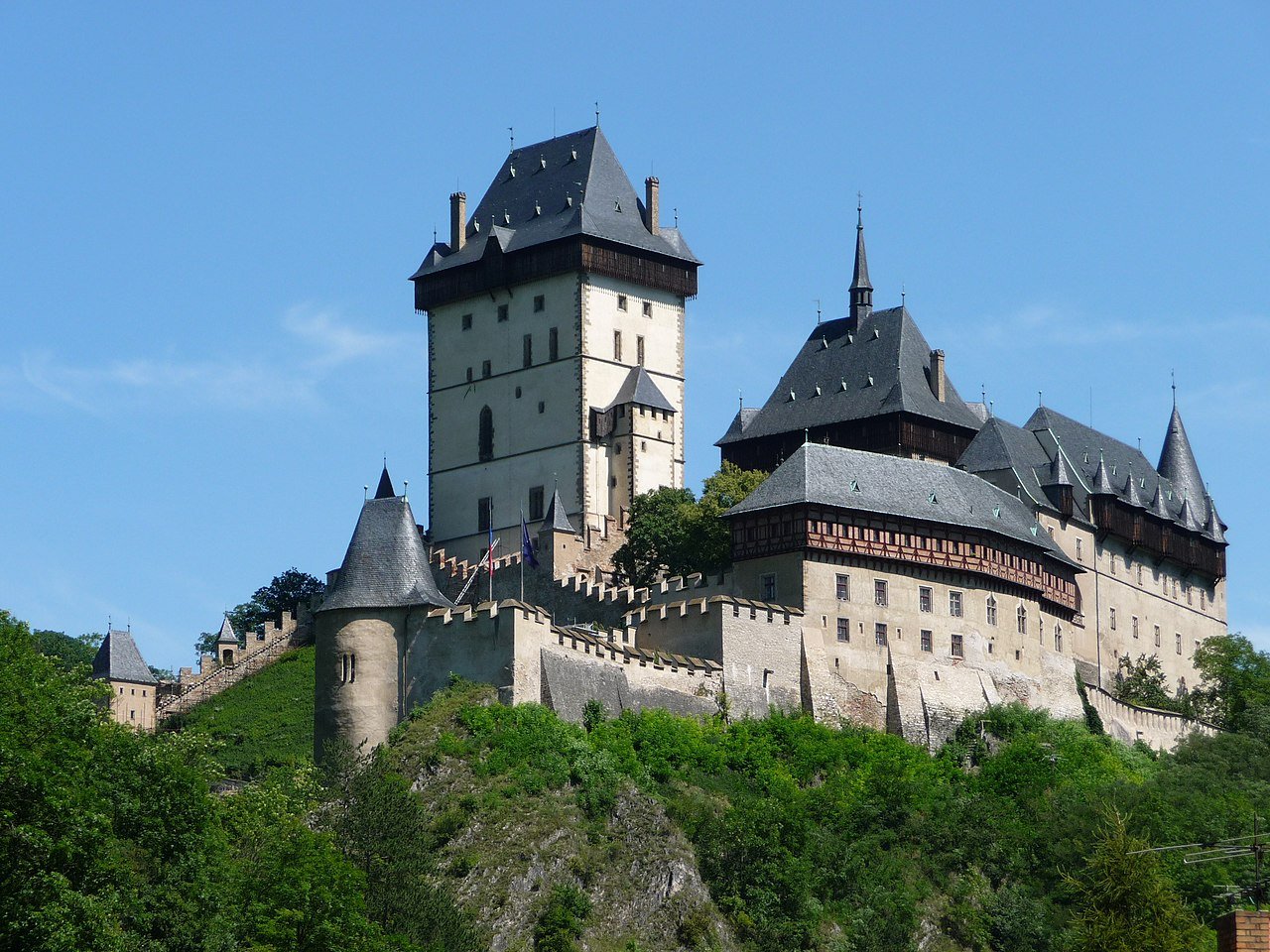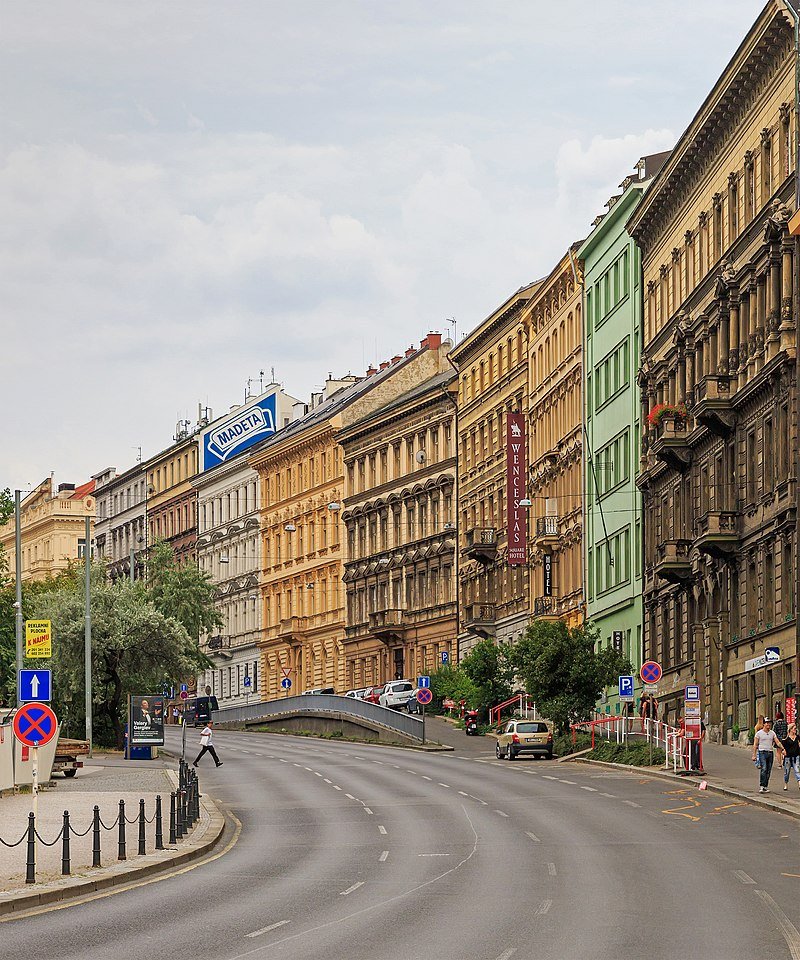Born as Wenceslaus on May 14, 1316, Charles IV was the descendant of both the Luxembourg dynasty and Přemyslid dynasty. At the age of seven, he was sent to live in France with his uncle, where he would be educated and meet his future wife, Blanche of Valois, as well as befriend the future pope, Clement VI. It would be at his confirmation that he would adopt the name Charles in honor of his uncle who he was living with, King Charles IV of France. In 1330, Charles IV returned to Luxembourg and a year later he went to northern Italy with his father in order to defend their family’s territory there, consolidating his rule in Lucca, Tuscany with the founding of the town and fortress known as Montecarlo.
Charles IV as depicted in the Votive Panel of Jan Očko of Vlašim
Three years later, Charles IV returned to the lands of Bohemia, where he served as Margrave of Moravia and administered the kingdom in his father’s absence. His skill at administration and diplomacy caused some strife between him and his father, but by 1341 he was confirmed his father’s successor and heir to the throne and in 1343, he was granted administrative control. Charles IV’s work resulted in the bishopric of Prague being raised to that of an archbishopric by Pope Clement VI, allowing the lands of Bohemia its own ecclesiastical autonomy.
In 1346, Charles IV was elected by the prince-electors of the Holy Roman Empire to become “King of the Romans” and took the name Charles IV, thanks to the efforts of his father and Pope Clement VI, who had excommunicated the previous emperor.
Despite being made Emperor, Charles IV did not immediately wield full authority. The excommunicated emperor, Louis IV, maintained that he was the rightful ruler and there were those in Germany who did not want to accept Charles IV’s supremacy, perceiving him as the “Priests’ King” because of his subservience to Pope Clement VI. Louis IV died one year later, preventing civil war. Irrespective of other kings being elected to replace him, Charles IV was able to win enough support to secure his position once and for all. In 1347, he was officially crowned King of Bohemia and moved his capital to Prague.
With his capital residence now in Prague, Charles IV worked to rebuild and improve the city. He established the Nové Město (New Town), founded the University of Prague (later becoming the Charles University), and laid the foundation stone for Karlštejn Castle in order to house the imperial crown jewels and Bohemian royal insignias. St. Vitus Cathedral also received its Gothic construction under his patronage. All of these efforts helped to elevate the city of Prague to new heights, establishing it as the intellectual and cultural center of Central Europe.
In 1349, Charles IV was once again elected as “King of the Romans” and this time as the undisputed ruler of the empire. His wife, Blanche of Valois, died in 1348 and he later married Anna of Bavaria in order to secure and alliance with the Bavarians. Wielding uncontested imperial authority, Charles IV began to expand Bohemia’s crown lands. He also tried to codify Bohemian law with the Maiestas Carolina of 1355. However, he was met with resistance by the Bohemian estates, forcing him to stop his efforts to centralize.
Golden Bull of 1356
In 1354, Charles IV finally saw fit to travel to Italy for his royal coronation as Holy Roman Emperor. Along the way, he stopped at St. Ambrose Basilica in Milan to receive the Iron Crown of Lombardy, after which he headed onwards to Rome. In 1355, he was officially crowned Holy Roman Emperor, making him the secular head of Christendom, after which he immediately returned to Prague in order to administer his empire. Upon returning in 1356, Charles IV decreed his famous Golden Bull of 1356. This decree sought to establish regulations for the election of the “King of the Romans”, so that the situation involving Louis IV would never be repeated.
Throughout his reign as Emperor, Charles IV acquired more land for the Bohemian crown. He inherited the lands of Silesia through his marriage to Anna von Schweidnitz and after engaging in hostilities with Brandenburg, acquired the Margravate of Brandenburg in 1373 for his son Wenceslaus. He was even crowned king of Burgundy in 1365 by Pope Urban V during his escort to Rome.
During the last few years of his reign as Holy Roman Emperor, Charles IV worked to secure the election of his son Wenceslaus as “King of the Romans” and helped to negotiate peace between the Swabian League of Cities in 1378. Beyond that, he did not participate much in the affairs of the Germans.
Bohemian lands under Charles IV
Charles IV died in November of 1378 and a statue was built in his honor in Prague. Though he was no longer alive, the legacy he left behind of elevating Prague and the Czechs to playing a bigger part on the world stage would continue on.
Statue of Charles IV near Charles Bridge
Written by James Travis
Citations:
Britannica, T. Editors of Encyclopaedia. “Charles IV: Holy Roman Emperor.” Encyclopedia Britannica, 2023. https://www.britannica.com/biography/Charles-IV-Holy-Roman-emperor.
“Charles IV: Holy Roman Emperor.” Wikipedia, 1 March 2023. https://en.wikipedia.org/wiki/Charles_IV,_Holy_Roman_Emperor.
“Charles IV: The Greatest Czech.” Prague City Tourism, 2023. https://www.prague.eu/en/articles/charles-iv-the-greatest-czech-12036.








